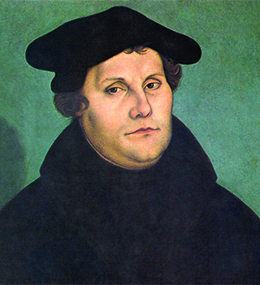| << Chapter < Page | Chapter >> Page > |
Until the 1500s, the Catholic Church provided a unifying religious structure for Christian Europe. The Vatican in Rome exercised great power over the lives of Europeans; it controlled not only learning and scholarship but also finances, because it levied taxes on the faithful. Spain, with its New World wealth, was the bastion of the Catholic faith. Beginning with the reform efforts of Martin Luther in 1517 and John Calvin in the 1530s, however, Catholic dominance came under attack as the Protestant Reformation , a split or schism among European Christians, began.
During the sixteenth century, Protestantism spread through northern Europe, and Catholic countries responded by attempting to extinguish what was seen as the Protestant menace. Religious turmoil between Catholics and Protestants influenced the history of the Atlantic World as well, since different nation-states competed not only for control of new territories but also for the preeminence of their religious beliefs there. Just as the history of Spain’s rise to power is linked to the Reconquista, so too is the history of early globalization connected to the history of competing Christian groups in the Atlantic World.
Martin Luther ( [link] ) was a German Catholic monk who took issue with the Catholic Church’s practice of selling indulgences , documents that absolved sinners of their errant behavior. He also objected to the Catholic Church’s taxation of ordinary Germans and the delivery of Mass in Latin, arguing that it failed to instruct German Catholics, who did not understand the language.

Many Europeans had called for reforms of the Catholic Church before Martin Luther did, but his protest had the unintended consequence of splitting European Christianity. Luther compiled a list of what he viewed as needed Church reforms, a document that came to be known as The Ninety-Five Theses , and nailed it to the door of a church in Wittenberg, Germany, in 1517. He called for the publication of the Bible in everyday language, took issue with the Church’s policy of imposing tithes (a required payment to the Church that appeared to enrich the clergy), and denounced the buying and selling of indulgences. Although he had hoped to reform the Catholic Church while remaining a part of it, Luther’s action instead triggered a movement called the Protestant Reformation that divided the Church in two. The Catholic Church condemned him as a heretic, but a doctrine based on his reforms, called Lutheranism, spread through northern Germany and Scandinavia.
Visit Fordham University’s Internet Medieval Sourcebook for access to many primary sources relating to the Protestant Reformation.

Notification Switch
Would you like to follow the 'U.s. history' conversation and receive update notifications?